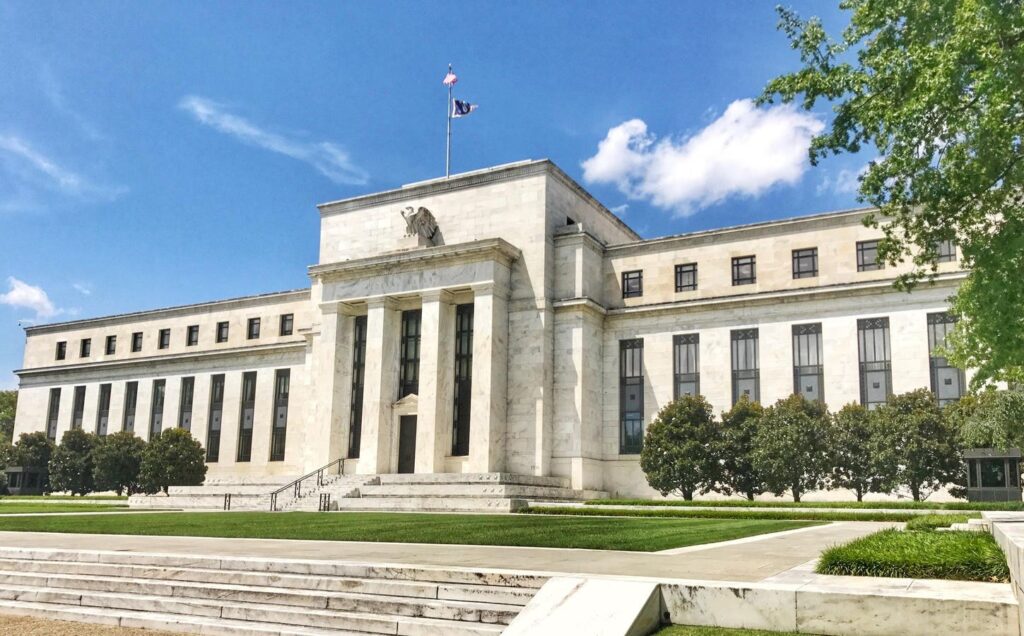President Donald Trump reignited his long-standing feud with Federal Reserve Chair Jerome Powell on Thursday, calling him “one of the dumbest, and most destructive, people in Government [sic]”. The comment on social media followed the Fed’s decision to hold interest rates steady, with the Federal Open Market Committee maintaining its target range at 4.25% to 4.5% – unchanged since December. Trump has been calling for lower rates, noting that the Fed was costing the country billions in interest payments.
Trump’s rhetoric sure does make headlines, but the real danger for investors is the Fed buckling under political pressure and cutting rates too soon. That could unleash a second wave of inflation, which might be more entrenched than the post-Covid surge. If that happens, expect a sharp reset in valuations, a spike in bond yields, and a steep correction in the S&P 500.
Cutting interest rates before inflation is fully tamed risks igniting a more persistent cycle of price increases, forcing the Fed to respond later with even more aggressive hikes, just as it did in the 1970s, when inflation spiraled out of control. Back then, the Fed’s delayed tightening led to stagflation and a severe equity downturn: the S&P 500 fell nearly 50% between 1972 and 1974. What’s more, higher valuations today, coupled with policy uncertainty, might actually make things worse. For investors seeking upside with less volatility than individual stocks, the Trefis High Quality portfolio offers an alternative. This portfolio has outperformed the S&P 500 and delivered cumulative returns of over 91% since inception.
Trump’s Policies Create The Perfect Storm?
This time around, there is a risk of persistent supply-side inflation driven by policy. Trump’s policy agenda, which includes tariffs, mass deportations, and tax cuts, could create a perfect storm of sorts. Tariffs are a supply shock. They raise input costs and consumer prices by removing cheaper imports from the market. Mass deportations of immigrants who entered the country illegally sounds reasonable – after all, they’re illegal immigrants – except that it will make cheaper labor unavailable. On average, the price of services will go up. This could be a big factor driving inflation higher. Then there are the tax cuts under Trump’s Big Beautiful Bill, under which most taxpayers are expected to see a tax cut, with all income groups reportedly likely to benefit. Now, while tariffs and deportations constrain the supply of goods and services to increase prices, reduction in taxes makes more cash available to consumers. So people can spend more while prices are higher. The result would be spiking inflation, and this would make the Fed’s job a lot harder.
A Replay of the 1970s?
The Fed will likely pull out its 2022 playbook: it’ll have no choice but to increase interest rates – not just reverting some of the recent cuts, but in fact, going beyond, to rates above 6% and even 7% or higher for short-term treasuries. Now, if you can get a guaranteed 6% on a 1-year Treasury bill, or bank savings – risk-free investments – won’t you demand higher earnings and returns from stocks as well? There will be an exodus – a massive outflow from the S&P and overall markets from risky equities into treasuries, CDs, and savings accounts. It happened in 2022 – within months, the S&P 500 tumbled by 20%. It’s easy to forget that stocks including Nvidia (NASDAQ:NVDA) and Meta (NASDAQ:META) had lost more than 50% in the 2022 rate cycle alone (Can Nvidia Stock Lose 50%?). Smaller companies, with less cash on their balance sheets, fared even worse. That said, in 2022, inflation was largely transitory, and the Fed was able to bring it under control. This time, it could be entrenched. Covid-related stimulus money was a transient cause of 2022 inflation. This time, tariffs, tax cuts, and deportations, together, are likely to prove a stronger and perhaps much more persistent force. A replaying of the 1970s crisis is very much possible, taking the S&P 500 down.
Higher rates don’t just hurt stocks – they make U.S. debt less sustainable. Annual interest payments now already exceed $1 trillion, and JPMorgan CEO Jamie Dimon has called it a red flag. If bond markets start to question the government’s fiscal path, yields could spike, deepening the equity selloff. On top of that, loan defaults are rising both in the commercial real estate sector and across consumer debt, like credit cards and auto loans. Big lenders like JPMorgan, BofA, and Citigroup are especially exposed.
So, how much would that hurt? Well, the combined market cap of S&P 500 constituents is roughly $47 trillion. So a 50% decline in the index would mean a loss of more than $23 trillion in value. And you thought the $5 trillion-plus wipeout the benchmark index witnessed in the first few days of April 2025 was bad! How Low Can JPMorgan Stock Go In A Market Crash?
A Question
When things are bad, what do you expect Trump to do? Blame everyone else, or change his course on taxes, deportation, and tariffs? There’s certainly hope that his cabinet and loyalists will be able to sway his view into easing inflationary policies in the event they create spiking inflation before the U.S. economy plunges into a recession. But if the easing does not materialize or comes into play too late, how bad can things get if there is another recession? Our dashboard How Low Can Stocks Go During A Market Crash captures how key stocks fared during and after the last seven market crashes.
Invest with Trefis Market Beating Portfolios
See all Trefis Price Estimates
Read the full article here


